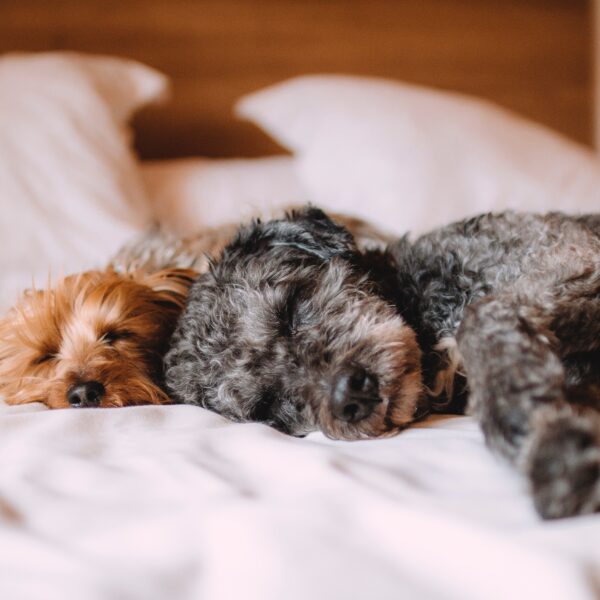Are rabbits easy to train?
Training your bunny has some great benefits for you and your pet. Dedicating some one-to-one time with your four-legged friend helps to promote bonding, and giving them your undivided attention on a regular basis allows you to get to know each other better. Training can also make life easier for you both – have you thought about litter training your pet? Or what about getting them more used to handling?
Training a rabbit sounds difficult though, doesn’t it? Believe it or not rabbits are relatively easy to train. With patience, perseverance, repetition and reward you’ll get there!
Top training tip: Little and often is best. Try 5 minutes twice a day to start with!
Training your rabbit to use a litter box
Many owners now keep their rabbits as house pets. This can work really well for bunny and owner, with plenty of social interaction for both of you. If you plan on keeping your rabbit indoors, litter training will make life a whole lot easier!
Before starting, make sure you have everything you need:
- Litter tray with low sides for easy access
- Rabbit-safe litter – use paper-based litter, newspaper or hay. Avoid clay-based clumping cat litter, if eaten it may cause an obstruction in rabbit intestines.
- Food rewards
- Start early, at 8 weeks old if possible. Don’t despair if your pet is older though; with plenty of patience and time you can still achieve success.
- Confine your bunny to one room to start with. They will naturally tend to use one area to toilet. Place their litter tray here to begin with, and you can gradually move it to your preferred location once litter training is complete.

Top training tip: Place a few of your bunny’s poo pellets in the litter so it smells familiar!
- When your bunny uses their litter tray, reward them with a tasty morsel. How about a nibble on some parsley?
- Rabbits naturally eat and poo at the same time. Putting a hay rack up next to their litter tray will help to reinforce this behaviour and make training easier.
- If you catch your bunny toileting outside the tray, say a firm ‘no’ then calmly move them to their bunny toilet.
Training your rabbit to be happy being handled!
So, you’ve brought home your cute bundle of fluff and were hoping for a cuddle, but your bunny seems to have other ideas! It is important to make sure that your bunny is happy to be handled not only for cuddle-time but also so you can check them for signs of illness and make grooming an easier task.
When training your bunny to accept handling, the most important factor to bear in mind is that rabbits are prey animals. In the wild, being ‘picked up’ is normally followed by being eaten by a predator. No wonder then that their bunny cousins in the pet world can find being handled a daunting prospect! Read on for our steps to happy handling…
- Start by sitting close to your bunny. Stay quiet and calm at all times and wait for them to approach you. Holding a tempting treat may help or for more nervous souls simply leave the treat near you.
- As your bunny gains confidence, progress to a gentle scratch on the head or a stroke when they approach.
- Picking up should only be attempted once your bun is totally confident around you and it may take several weeks to reach this point.
- Place one hand under the chest and support the hindquarters with the other
- Quickly but calmly bring your bunny close to your body
- Hold them firmly so they feel secure but not so tight that it is uncomfortable
- Put your bunny down carefully and immediately offer them a food reward
- Avoid holding your bunny by the scruff and never ever hold it by the ears.
- Avoid ‘hypnotising’ your bunny to restrain them. This technique may keep your bunny still for examination, but this is a prey animal ‘playing dead’ response and is a very stressful situation to put your bun in.
How to get guinea pigs used to being handled
So, how to interact with a guinea pig? Just like bunnies, guinea pigs are prey animals and approaches to handling and training them are very similar. So, stay close to floor level with no sudden movements and remember to use a soft voice because loud noises may startle them. They tend to be a bit trickier to train than rabbits but respond well to positive reinforcement and the same techniques can be used. So, food rewards, perseverance and a calm approach are the name of the game!
How to teach your rabbit to fetch
Rabbits are not natural retrievers but believe it or not, it is possible to train them to fetch. Start by teaching your bun to come when you call their name. Use a food reward and once they are heading in your direction, call their name. With repetition they will soon learn that when you call their name, it is a great idea to hop over to you for their well-deserved treat.
Teaching the ‘fetch’ command is easiest if they have a favourite toy. Make it a game and when your bunny picks up their toy, call them back to you for their reward.
Clicker training a rabbit
Clicker training is a technique often used for dog training, but rabbits can respond just as well. To start with, a click is always followed by a reward. With time you can use the reward less frequently until eventually the click becomes the reward.
The main advantage to clicker training is that it accurately tells your bunny what behaviour you are rewarding. Food treats are great but by the time food has moved from your pocket or hand to your pet, your bunny may have moved on from the behaviour you are wanting to reinforce so this can create confusion.

How to train a guinea pig
Guinea pigs are not quite as responsive to training as rabbits but with a little time and effort you will be surprised at what you and your piggy friend can achieve! Here are our guinea pig training tips:
- Use positive reinforcement
- Food rewards work well
- Stay calm and quiet
- Repetition is the key
So, our smaller pets can gain just us much from training as those with waggy tails. Grab some tasty treats and a quiet corner of your home and who knows what tricks your pet will be doing in a few weeks’ time?
For more fun facts on rabbits and guinea pigs, why not check out another article?


